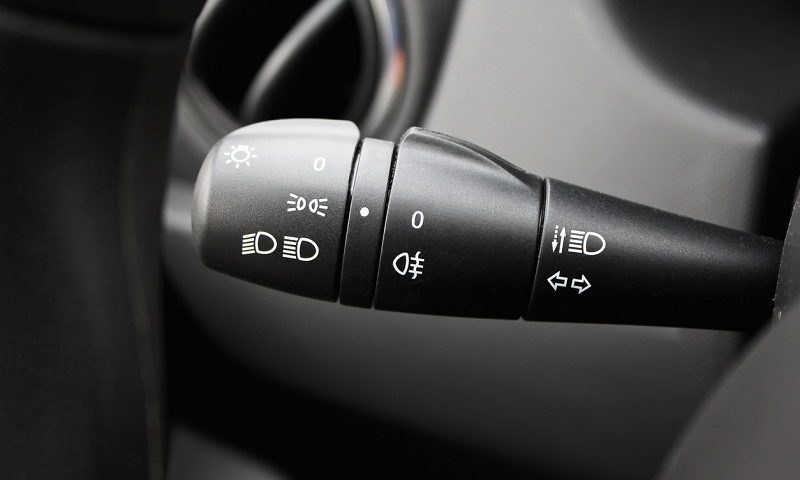1st CENTRAL’s essential guide to car lights and headlights

Headlights when it’s dark, full beam when it’s darker. Easy, right?
You’d be surprised how many people don’t know when to use all the lights on their car – I mean, what even are fog lights? But that doesn’t mean all those lights aren’t there for a reason.
Let’s take a look at the different types of lights on your car and when you should be putting them to use…
Dipped headlights
You probably refer to these as your ‘headlights’. They’re brighter than your sidelights, but not quite as dazzling as full beams.
We call them dipped headlights because they’re technically angled down, lighting up the road without blinding drivers coming towards you.
Some newer cars actually have running lights that come on automatically, but if your car isn’t that smart, you’ll definitely need to figure out how to turn these on and off. You can usually find the switch on your dashboard dial or on a twisted indicator stick. Check your car manual if you’re unsure.
When to use your dipped headlights
You should use your dipped lights at night or when bad weather in the daytime means you’re struggling to see more than 100m in front of you.
Full beam headlights
These are the brightest lights on your car, sometimes known as high beam headlights because they’re angled higher than dipped headlights. Turning on your full beam lights will illuminate more of the road than standard headlights, so you can see further ahead.
The switch for these is usually somewhere near the switch for your dipped headlights.
When to use your full beams
Only use full beam on unlit stretches of road at night, and only when you are clear of other traffic.
Full beam headlights can be dazzling for other road users, including cyclists and pedestrians. You should always dip your headlights when meeting other traffic, or on left-turning bends, to reduce the risk of accidents.
Fog lights
As the name suggests, fog lights are designed to cut through fog and mist better than your standard dipped headlights. They do this by illuminating the road under the fog, so the light doesn’t reflect off it.
You’ll usually have two sets of fog lights, front and back, with colour-coded switches: amber for rear lights and green for front lights.
When to use your fog lights
Switch to your fog lights when fog or mist means you can’t see more than 100m in front of you.
Sidelights/parking lights
Sidelights are found in the front corners of your car. They’re not as bright as your dipped lights, so many drivers use them to make themselves visible when it’s not quite dark enough for main headlights.
Some cars have sidelights that are always on while the engine is running. However, if you need to turn them on manually, you should be able to find the switch on your dashboard dial or twisted indicator stick.
When to use your sidelights
According to The Highway Code, you must have your parking lights or sidelights on when parked on a road or lay-by with a speed limit over 30mph.
If the speed limit is less than 30mph, you don’t need to use your sidelights, as long as:
- You’re stopped in a recognised parking bay or lay-by, or
- You’re facing in the direction of the traffic, close to the kerb, and at least 10m away from the nearest junction
You must also use sidelights if you park on a road obscured by fog.
Tail lights
These are the red lights at the back of your car that come on at the same time as your headlights. You don’t need to work these manually as they should illuminate automatically when using your other lights.
Brake lights
Your brake lights illuminate when you apply your brakes, to show other road users that you’re slowing down.
Again, these should work automatically when you put your foot on the brake, so no need to manually turn them on and off.
Indicators
Found on all four corners of your car, your indicators are blinking amber lights used to communicate your movements to other road users.
Turn your indicators on and off using your indicator stalk. They’ll usually turn off
automatically once you straighten up after making your turn.
When to use your indicators
Use your indicators when you plan to turn right, left, or pull out or into the road – this includes using roundabouts. You can also use them to signal changing lanes or overtaking.
Hazard warning lights
Your hazards use the same bulbs as your indicators, appearing at each corner of your car. Switching on your hazards will cause the lights to blink amber continuously, warning other drivers of danger or obstructions on the road – including when you’ve broken down.
The switch for you hazard lights is indicated by a triangle shape and can usually be found on your dashboard.
When to use your hazard lights
Hazard lights should only be used when your car is stationary and you need to warn other drivers that you, or something else, is obstructing the road.
You can also use your hazards on a motorway to alert drivers of an obstruction up ahead.
Lights up on driving law
Driving with faulty headlights is not only dangerous for you and other road users, but could land you with huge fines if you’re pulled over by the police.
The Highway Code states that “lights, indicators, reflectors, and number plates MUST be kept clean and clear”.
If you’re pulled over by police for a faulty light, you’re likely to be hit with a £100 fine and three points on your licence.
However, if you choose to challenge the fine in court, the charge could ultimately increase up to £1,000.
Is your car in good nick? Keep your motor running smoothly with these top 10 essential maintenance checks.


